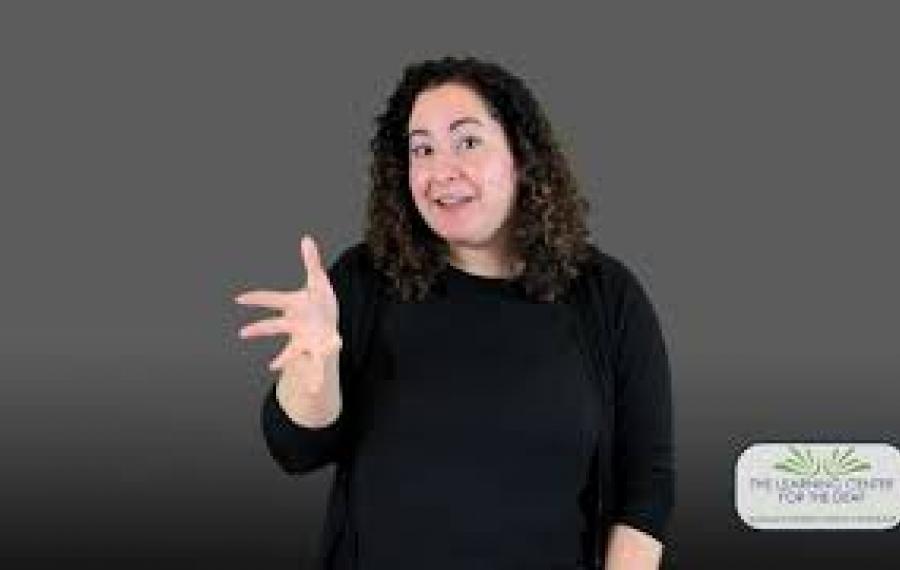Have you wondered what signs are most helpful to teach your new baby? Maybe you’re curious about the best age to start teaching your child these signs? This list, created by a Deaf professional working in Early Intervention for many years, is a great place to start!
You will learn the top few signs recommended to teach your infant, at what age, and how to teach the sign. This list is not exhaustive, by any means. If you are interested in learning more signs, or learning American Sign Language, The Learning Center for the Deaf has resources to support you and your family.
- MILK: We all know that “MILK” is the first thing an infant experiences on a regular basis. Whether breastfed or by bottle, MILK is a universal experience for infants. You can start using this sign as soon as your child is born, children as early as 2 months old have been observed opening and closing their fists (making a “baby sign” for MILK”) when hungry! Remembering to use this sign is easy- every time you hold your to start feeding, simply sign “MILK! READY, MILK!” before proceeding to feed your child.
- ALL DONE: This is another sign that can be used with your baby as early as birth. Using this sign early helps infants understand the end of an activity, and signals for a possible transition to another activity. This may help ease transition anxiety if your baby seems to get upset when taken out of a bath suddenly, or if picked up from the play mat suddenly. This also is a sign that your baby will eventually be able to independently to indicate their wants/needs as they become older. Exposure your baby to ALL DONE early sets the stage for their own use of the sign as early as 6-7 months old. You can sign “ALL DONE” after feeding, before picking them up from the crib after nap, after a diaper change is completed, or after playtime has ended.
- MORE: This has the same function as ALL DONE, and can be used as early as birth. It helps indicate to your baby an activity will continue. MORE also helps your baby indicate their wants and needs once they can use the sign. It also reinforces object permanence when used with an item during play! You can use MORE in a variety of contexts, including during peek-a-boo, feeding breaks, or when giving a massage to your baby. When using MORE with your baby, be sure to pause for a few seconds after showing them the sign to observe their reaction.
- WHERE: WHERE is a fantastic sign to use with your baby, reinforce joint attention, eye gaze and eye contact! This can be done as early as 3-6 months, as your baby gets comfortable with visual language and you become comfortable with using signs with your baby. You can pair WHERE with another sign that you already know (WHERE MILK?, WHERE MOM?). When using WHERE, be sure to show your baby how to look around the room for the item you are seeking by pointing or physically looking around, and show them the item once you’ve found it. For older infants and toddlers, you can make a game out of this, like I Spy!
- MOM/DAD/BROTHER/SISTER (etc): Learning and using the signs for members of your family is so important, and the most loving way to include your new baby in your family! You can sign your own name sign when you greet your baby in the mornings or after naps (HI! I’M DAD!), you can show your baby how you greet other family members when they come into the room (HI BROTHER!). You could use or create a family photo book, and practice by pointing to the picture, then signing their name sign.
Whenever you use any of these signs, be sure that you and your hands are within your baby’s line of sight. Sometimes you may have to wait for them to focus their attention on you before you show the sign. Also remember that when babies start to use signs themselves, their little hands may not make the signs perfectly yet. A baby’s sign for MORE may look different than your sign for MORE, and that is completely expected and appropriate! You can praise them for using the sign (YAY!) and repeat their request back to them while using the correct sign (MORE BANANA?). Most importantly, have fun!
